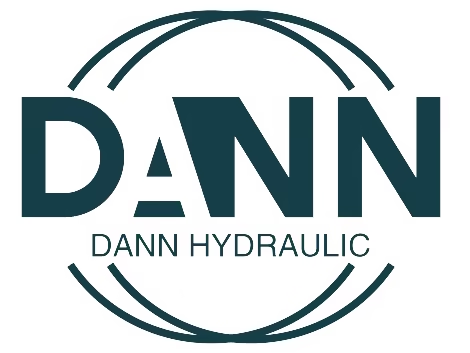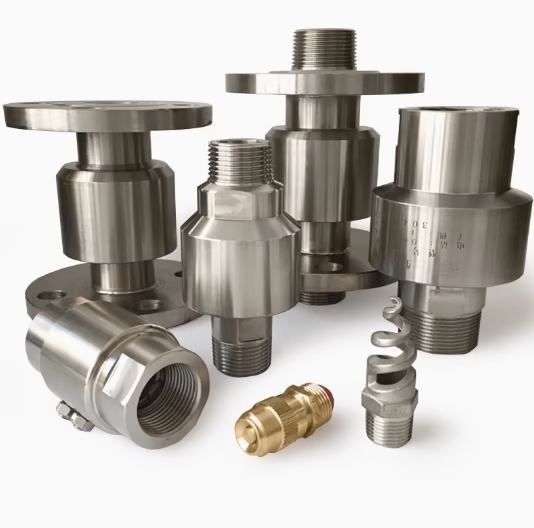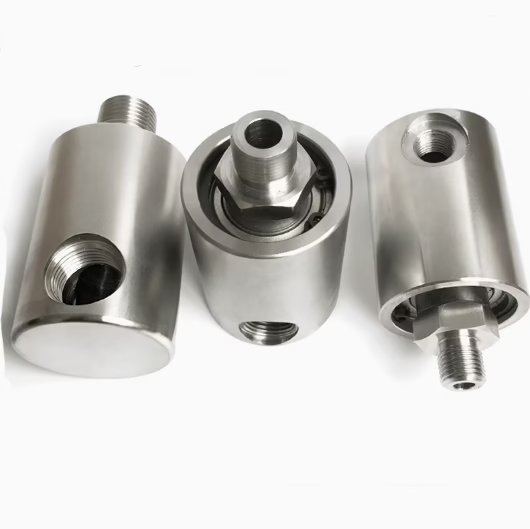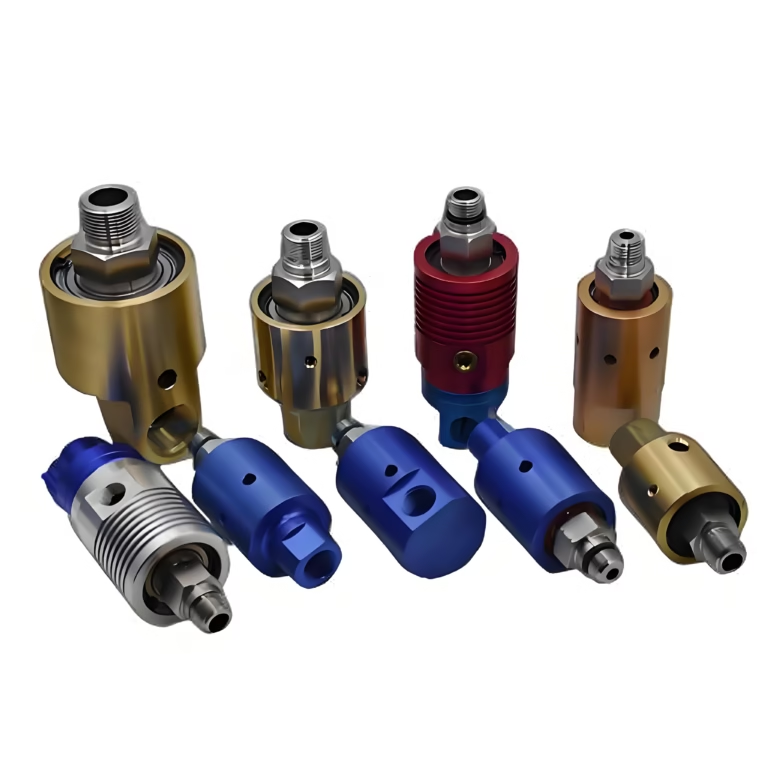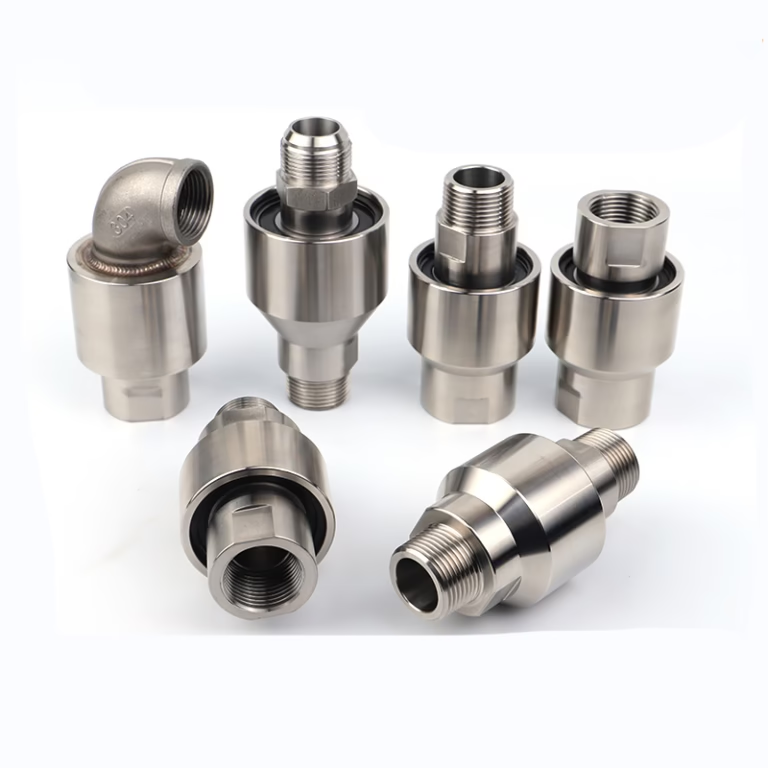what is a swivel connector joint
Introduction
In the realm of mechanical engineering and industrial operations, the swivel connector joint plays a crucial role in facilitating fluid transfer and enabling rotational movement. Whether you’re involved in manufacturing, construction, or the maintenance of complex machinery, understanding swivel joint connectors is essential. This blog post will delve deep into what swivel joint connectors are, their various types, how they function, where they are used, and their pricing. By the end of this article, you’ll have a comprehensive understanding of these essential components, which will not only enhance your technical knowledge but also help with make informed purchasing decisions.
What is a Swivel Joint Connector?
A swivel joint connector is a mechanical device that allows two or more components to rotate relative to each other while maintaining a connection for the transfer of fluids (such as water, oil, gas, or steam), or in some cases, for electrical or data transmission. At its core, it consists of a stationary part and a rotating part. The stationary part is typically connected to a fixed structure or pipeline, while the rotating part can move freely around an axis.
The key feature of a swivel joint connector is its ability to enable rotational movement without disrupting the flow of the medium passing through it. This makes it invaluable in a wide range of applications where parts need to move, turn, or pivot while ensuring a continuous and leak-free transfer of substances.
Basic Structure and Components
Housing
The housing of a swivel joint connector serves as the outer shell that encloses and protects the internal components. It is usually made of durable materials such as metals (like stainless steel, carbon steel, or alloy steel) or high-performance plastics, depending on the application requirements. The housing provides structural support and helps maintain the integrity of the joint, ensuring that the internal parts are properly aligned and protected from external elements such as dust, moisture, and mechanical damage.
Rotating Element
The rotating element is the part that allows for the pivotal movement of the connector. It is designed to rotate smoothly within the housing. This element often features a bearing system, which can be ball bearings, roller bearings, or plain bearings. The choice of bearing depends on factors such as the load capacity, rotational speed, and the nature of the application. For example, ball bearings are commonly used in applications that require high-speed rotation with relatively low to medium loads, while roller bearings are better suited for applications with heavy loads.
Seals
Seals are one of the most critical components of a swivel joint connector. Their primary function is to prevent leakage of the fluid or gas passing through the joint. Seals are typically made of materials like rubber, fluorocarbon polymers (such as Viton), or PTFE (Polytetrafluoroethylene). Different types of seals are used depending on the operating conditions, including temperature, pressure, and the chemical compatibility of the fluid being transferred. For instance, Viton seals are highly resistant to chemicals and high temperatures, making them ideal for applications involving aggressive fluids or high-heat environments.
Shaft or Stem
The shaft or stem connects the rotating element to the components that need to be joined or the pipes through which the medium flows. It is responsible for transmitting the rotational force and ensuring that the flow path remains intact. The shaft is usually made of a strong and durable material, often a metal alloy, to withstand the mechanical stresses and maintain the alignment of the joint during operation.
How Does a Swivel Joint Connector Work?
The operation of a swivel joint connector is based on the principle of allowing relative rotation between two connected parts while maintaining a sealed connection for fluid or gas transfer. When a rotational force is applied to the rotating element, the bearings within the joint reduce the friction, enabling smooth movement.
As the rotating part moves, the seals prevent any leakage of the medium within the joint. The design of the internal passages ensures that the fluid or gas can flow continuously from the stationary part to the rotating part and vice versa. For example, in a hydraulic system where a swivel joint connector is used to connect a stationary hydraulic pump to a rotating arm, the fluid is pumped into the stationary end of the joint. As the arm rotates, the swivel joint allows the fluid to flow freely to the arm’s actuators, maintaining the hydraulic pressure and enabling the arm to perform its functions, such as lifting or moving objects.
Types of Swivel Joint Connectors
Ball-Type Swivel Joint Connectors
Design and Function
Ball-type swivel joint connectors feature a spherical ball at the center of the joint, which allows for multi-directional rotation. The ball is seated within a socket-like structure in the housing, and bearings are often used to reduce friction and support the ball. This design enables a high degree of flexibility, allowing the connected components to rotate on multiple axes.
They are commonly used in applications where the direction of movement is not fixed and requires a wide range of motion. For example, in agricultural machinery, such as irrigation systems, ball-type swivel joints allow the hoses to move freely as the machinery moves across the field, ensuring that the water supply is not disrupted.
Advantages
High flexibility in movement, enabling rotation in multiple directions.
Can handle a relatively high degree of misalignment between the connected components.
Suitable for applications where there is a need for frequent and varied movement.
Disadvantages
May have a lower load-carrying capacity compared to some other types of swivel joints, especially in heavy-duty applications.
The spherical design can sometimes make it more difficult to seal effectively, especially under high-pressure conditions.
Gimbal – Type Swivel Joint Connectors
Design and Function
Gimbal-type swivel connector joints consist of a series of interconnected rings or frames that allow for rotation in two or more perpendicular axes. This design provides a more controlled and stable form of multi-directional movement compared to ball-type joints. The gimbals are typically made of metal and are connected with pivots or pins, enabling smooth rotation.
They are often used in applications where precise control over the movement is required, such as in aerospace equipment. For example, in aircraft fuel systems, gimbal-type swivel joints ensure that the fuel lines can move with the aircraft’s movements without leaking or breaking.
Advantages
Offers precise control over multi-directional movement.
Can handle higher loads and more demanding operating conditions compared to some other types of swivel joints.
Provides a more stable connection, reducing the risk of vibrations or misalignments. –
Disadvantages
More complex in design and construction, which can lead to higher manufacturing costs.
Requires more maintenance due to the multiple moving parts and joints.
Piston-Type Swivel Joint Connectors
Design and Function
Piston-type swivel joint connectors use a piston-like mechanism within the joint to facilitate rotation. The piston moves within a cylinder-shaped housing, and as it does, it allows the connected components to rotate. This type of joint is often used in applications where there is a need to transfer fluid under high pressure while also enabling rotational movement.
In industrial hydraulic presses, piston-type swivel joints are used to connect the hydraulic cylinders to the power supply lines. The high-pressure fluid can flow through the joint as the press operates, and the joint allows the cylinders to move and rotate as required during the pressing process.
Advantages
Excellent for high-pressure fluid transfer applications.
Can provide a very secure and leak-proof connection under high-pressure conditions.
The piston design can also offer good resistance to wear and tear, increasing the lifespan of the joint.
Disadvantages
Limited in terms of the range of rotation compared to ball-type or gimbal-type joints.
The complex internal piston mechanism may require more frequent inspection and maintenance to ensure proper operation.
Applications Across Industries
Power Transmission and Cable Laying
In overhead power line construction, swivel joints prevent conductor twisting during cable pulling. For instance, the 8-shaped anti-twist connector by Marshine Power Tech can withstand 30kN tensile force, making it ideal for high-voltage cable installation.
Hydraulic Machinery
Hydraulic swivels enable rotation in hydraulic cylinders, manifolds, and motors. Applications include:
Heavy Equipment: Excavators, cranes, and rotating tables.
Marine Systems: Steering mechanisms and thruster drives.
Oil & Gas Industry
Offshore platforms rely on high-pressure swivels to transfer fluids between floating structures and subsea wells. Advanced designs like the PTFE-sealed flange joints by LU Zhi-Zhen et al. (2014) offer superior sealing in deepwater environments.
Automotive and Aerospace
Exhaust Systems: Flexible joints in catalytic converters.
Aircraft Landing Gear: Swivels in retractable landing gear mechanisms.
Factors Affecting the Price of Swivel Joint Connectors
Material of Construction
Metals
Stainless Steel:
Stainless steel swivel joint connectors are popular due to their excellent corrosion resistance, durability, and strength. They are suitable for a wide range of applications, especially those involving harsh environments or corrosive fluids. However, stainless steel is relatively expensive compared to some other materials, which makes stainless-steel swivel joints more costly. The price of a stainless-steel swivel joint connector can range from $50 to several hundred dollars, depending on the size, complexity, and pressure rating.
Carbon Steel:
Carbon steel is a more cost-effective option compared to stainless steel. It is commonly used in applications where corrosion is not a major concern, such as in some industrial machinery or general-purpose piping systems. Carbon-steel swivel joints are generally less expensive, with prices starting from around $20 for smaller, basic models and going up to a few hundred dollars for larger and more complex ones.
Alloy Steel:
Alloy steels are designed to have enhanced properties, such as increased strength, wear resistance, or heat resistance. Swivel joints made of alloy steel are used in high-performance applications, such as in aerospace or heavy-duty industrial equipment. Due to the specialized nature of alloy steels and the manufacturing processes involved, alloy-steel swivel joint connectors can be quite expensive, with prices often exceeding several hundred dollars and even reaching into the thousands for large, high-pressure models.
Non-Metallic Materials
Plastics:
Plastic swivel joint connectors are lightweight and cost-effective. They are suitable for applications where the pressure and temperature requirements are relatively low and where the fluid being transferred is non-corrosive. For example, in some household plumbing or small-scale irrigation systems, plastic swivel joints can be used. The price of plastic swivel joints is usually very affordable, starting from as low as $5 for basic models and rarely exceeding $50 for more complex ones.
Composite Materials:
Composite materials combine the properties of different materials, such as the strength of metals and the lightweight nature of plastics. Swivel joints made of composite materials offer a good balance of performance and cost. They are used in applications where a combination of high strength, corrosion resistance, and low weight is required, such as in some marine or aerospace applications. The price of composite-material swivel joint connectors can vary widely, depending on the specific materials and manufacturing processes used, but they generally fall in the mid-range, from around $50 to a few hundred dollars.
Pressure and Temperature Ratings
Low-Pressure and Low-Temperature Applications
Swivel joint connectors designed for low-pressure (up to 100 psi) and low – low-temperature (below 100°C) applications are generally less expensive. These joints can be made of simpler materials and have less complex internal structures. For example, a low-pressure, low – low-temperature plastic swivel joint connector might cost around $10 – $30, while a basic metal joint for the same conditions could range from $20 – $50.
Medium – Pressure and Medium – Temperature Applications
Medium-pressure (100 – 500 psi) and medium-temperature (100 – 200°C) applications require swivel joints with more robust designs and better-quality materials. Seals and bearings must be more durable to withstand the increased pressure and temperature. The price for swivel joint connectors in this range can start from around $50 for smaller, basic models and go up to $200 – $300 for larger and more complex ones, depending on the material and brand.
High-Pressure and High-Temperature Applications
High-pressure (above 500 psi) and high-temperature (above 200°C) applications demand swivel joint connectors with advanced designs and high-performance materials. These joints often feature specialized seals, high-strength alloys, and sophisticated bearing systems. As a result, they are significantly more expensive. A high-pressure, high-temperature stainless-steel swivel joint connector can cost anywhere from $300 to several thousand dollars, depending on the size, pressure rating, and the specific requirements of the application.
Size and Complexity
Size
Small-sized swivel joint connectors, which are typically used for applications with limited space or low-volume fluid transfer, are generally less expensive. For example, a small-diameter plastic swivel joint for a hobbyist project might cost only $5 – $10. In contrast, large-sized swivel joints, such as those used in industrial pipelines or heavy-machinery hydraulic systems, are more costly. A large-diameter, high-pressure metal swivel joint connector can cost several hundred dollars or more, depending on the material and pressure rating.
Complexity
Simple swivel joint connectors with basic designs and single-function capabilities are less expensive. For instance, a basic ball-type swivel joint with a standard bearing and seal configuration will have a lower price compared to a multi-axis gimbal-type swivel joint with advanced sealing and precision-engineered bearings. Swivel joints with additional features, such as built-in sensors for monitoring pressure or temperature, or those designed for specialized applications like aerospace or medical equipment, are also more complex and thus more expensive. The price difference between a simple and a complex swivel joint can be substantial, with complex joints costing two to five times more than their simpler counterparts.
Brand and Manufacturer Reputation
Well-established brands with a reputation for quality and reliability tend to charge higher prices for their swivel joint connectors. These manufacturers invest in research and development, use high-quality materials, and have strict quality control processes. For example, a swivel joint connector from a leading global brand may cost 20 – 50% more than a similar-spec product from an unknown or less-established manufacturer. However, the higher price is often justified by the longer lifespan, better performance, and lower maintenance requirements of the branded product.
Newer or lesser-known manufacturers may offer lower-priced swivel joint connectors.
Installation and Maintenance Best Practices
Installation Guidelines
Alignment: Use laser alignment tools to avoid angular misalignment.
Lubrication: Apply molybdenum disulfide grease for high-load applications.
Torque Settings: Fasten bolts to 80% of yield strength to prevent over-tightening.
Preventive Maintenance
Inspection Schedule: Monthly checks for leaks, corrosion, and bearing wear.
Replacement Criteria: Seal replacement every 2,000 operating hours.
Troubleshooting Common Issues
Leakage: Caused by worn seals or over-pressurization.
Stiff Rotation: Indicates bearing failure or lack of lubrication.
Market Trends and Competitive Landscape
Global Market Dynamics
Growth Drivers: Rising infrastructure spending in emerging markets (e.g., India, Southeast Asia).
Technological Shifts: Adoption of IoT-enabled smart swivels for predictive maintenance.
Leading Manufacturers
Emco Wheaton: Specializes in LNG transfer systems.
Dixon Valve: Known for hydraulic swivels with patented leak-proof designs.
Pacific Hoseflex: Focus on custom-engineered solutions for mining.
Sustainability Trends
Eco-Design: Recyclable materials and energy-efficient manufacturing.
Circular Economy: Remanufacturing programs for end-of-life swivels.
Procurement Strategies for Buyers
Total Cost of Ownership (TCO)
Lifecycle Costs: Factor in maintenance, downtime, and replacement parts.
Supplier Partnerships: Negotiate service-level agreements (SLAs) for critical applications.
Risk Mitigation
Dual Sourcing: Engage two suppliers to avoid supply chain disruptions.
Inventory Management: Use ABC analysis to prioritize high-usage items.
Compliance and Certification
Industry Standards: Ensure compliance with ASME B31.3 for pressure piping.
Certifications: Look for ISO 9001:2015 and API Q1 quality certifications.
Future Innovations
Smart Swivel Joints
Embedded Sensors: Monitor temperature, pressure, and vibration in real time.
AI Predictive Maintenance: Algorithms forecast failures using operational data.
Advanced Materials
Graphene-Coated Bearings: For extreme temperature applications.
Self-Healing Polymers: Autonomous repair of minor surface cracks.
3D Printing Applications
Rapid Prototyping: Custom swivels for niche applications.
Additive Manufacturing: Complex geometries unattainable via traditional methods.
Conclusion: The Swivel Joint Connector Ecosystem
From cable-laying operations in remote deserts to deep-sea oil drilling, swivel joint connectors are the linchpin of modern industrial infrastructure. By mastering their technical nuances, procurement strategies, and emerging trends, engineers and buyers can drive efficiency, reduce downtime, and future-proof their operations.
Call to Action:
Engineers: Download our swivel joint selection guide for sizing calculations.
Procurement Teams: Request a free TCO analysis template to optimize spending.
